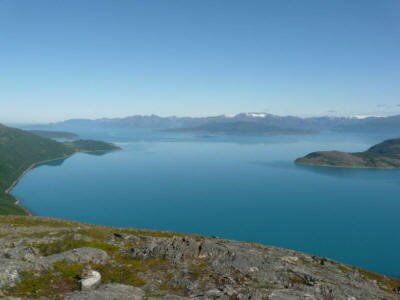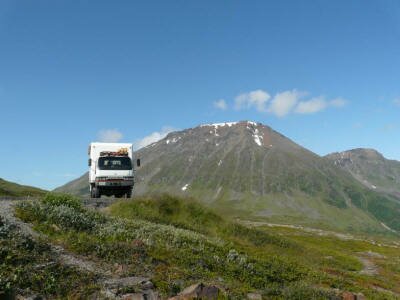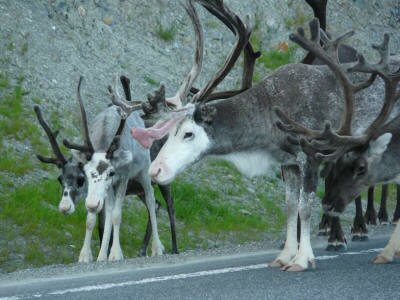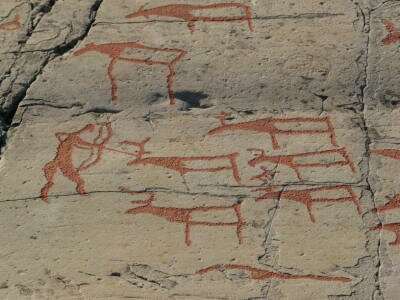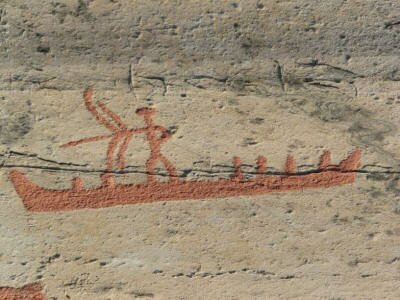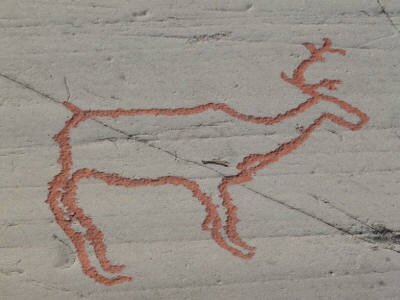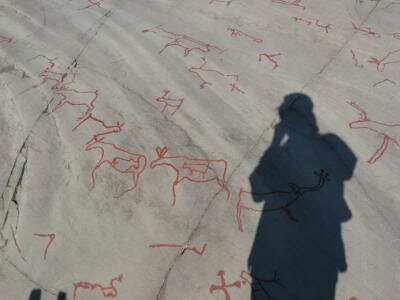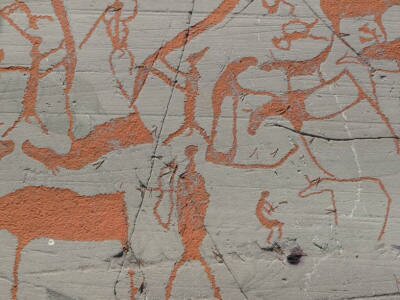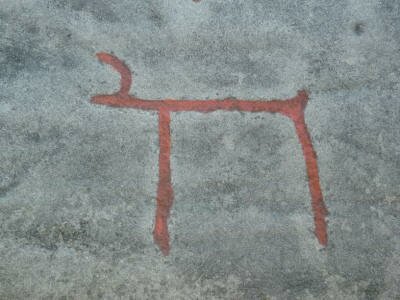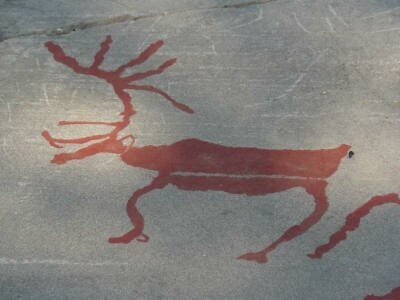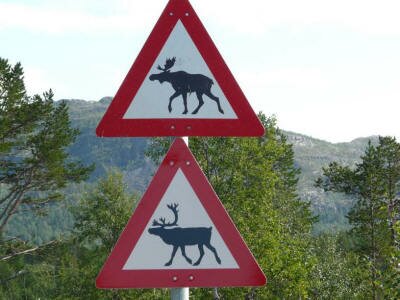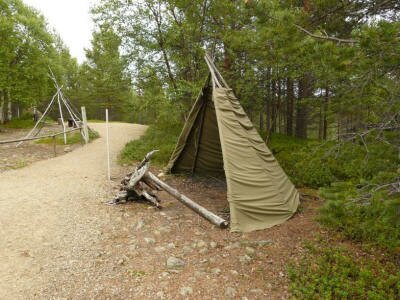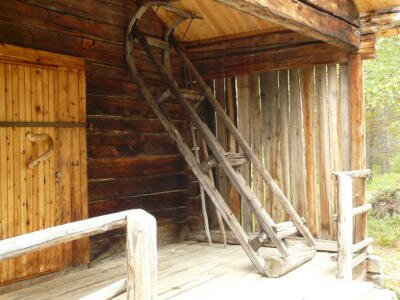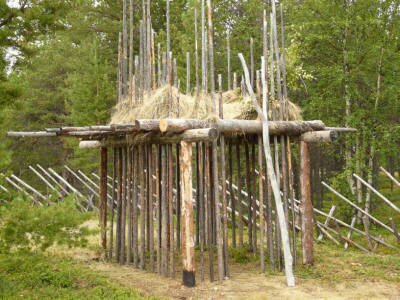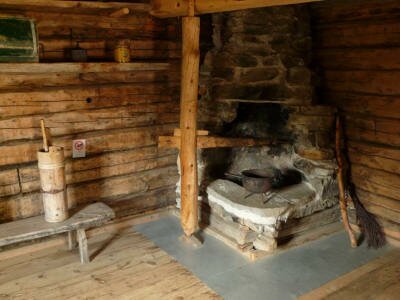July 29 - 31, 2009
On our way north the road hugged the shore of the fjords giving us no-stop great views and panoramas. At one point the fjord sent an arm inland that we had to follow along as no bridge of ferry crossed over it. The way passed by numerous waterfalls and through several tunnels yet all the time we could see the road on the other side - so close but so far. By the time we got to the other side, we calculated that we had driven nearly 24 miles to go around a fjord that was about one mile wide! We did get stopped by the police at a checkpoint for random sobriety testing. The weird thing was that it was only 10am in the morning - how many people drive drunk so early in the morning?
| Our northern-most destination in Norway was Alta, at approximately 70 degrees latitude north. We decided to forego the trip to Nordkapp which is the northern most point in Europe that you can drive to. We had read and been told that the drive was actually nothing spectacular and the view was just another view over the ocean. Not to mention that it would cost us close to $200 just in fees to drive there and back. All in all, we can say that we didn't feel we were missing anything. We did start to see our first reindeer - amazingly they were right alongside the road. |
Alta, on the other hand, was something we definitely did not want to miss. In Alta is the Unesco World Heritage site of Hjemmeluft/Jiepmaluokta showcasing some 6,000 prehistoric rock carvings on some 100 different panels in four different areas that date back approximately 6,200 years. Even more amazing is that these carvings were not even discovered until 1973! Many carvings depict reindeer, elk, bears, dogs, wolves, foxes, hares, geese, ducks, swans, cormorants, halibut, salmon and whales. Other carvings show people, boats, hunting and fishing. The carvings have been painted reddish brown, a color similar to that used on many cave painting. There is no proof that the carvings had ever been so painted but the researchers felt that without the paint the carvings were too difficult to pick out. Here is a selection of the panels.
After spending several hours wandering along the pathways that meandered through the art sites, we drove back in the direction that we had come to an old quarry that we had seen that was already filling with other campers and was right on the water. It was a nice spot and at dusk (about 10pm) nearly everyone headed to the waters edge to toss in their lines and try their luck at fishing. We decided to watch a movie on our laptop.
In the morning we met our neighbors who were big fisherfolks - she was apparently a better fisherman than her husband - who told us all about fishing and how easy it was to catch fish. Almost to prove the point, she caught a flounder after only a couple minutes of fishing. Then it seemed that all of the other fishermen starting catching fish too. Too bad we didn't have any fishing equipment.
| So we headed back up to Alta to fill up our fuel tank, then started our drive back down from the far north. We were now driving through the area that is the homeland of the indigenous Sami people, also know as the Lapps. Their territory covers the northern portion of Norway (known as Finnmark), Finland (known as Lappland) and Sweden. We camped at a spot where we were able to hike along a stream to view several hundred old Sami sites. It sounded more exciting than it turned out to be, as the sites were really either piles of rocks from old cooking areas, or big holes in the ground that were old reindeer pit traps. However it was good to be able to hike into the forest. Thank goodness for mosquito repellant as the little buggers followed us in a cloud. Here's a popular road sign. |
August 1
Hello new country! This morning we entered Finland, the 27th country that we have travelled through with our Fuso Expedition Vehicle. Our first destination in Lappland was Siida, the excellent cultural museum that details the Sami/Lapp way of life. The present day Lapps, although still a separate people, have fully integrated with the Norwegian and Finnish people. The museum details their old ways of life and shows a world timeline as a way of comparing what was happening up here near the Arctic Circle with what was happening around the world. We found it very interesting. We also found answers to our questions about the various wild berries that we have been seeing for the past couple of weeks. It turns out that they were all edible and that the most common ones were a type of blueberry. Now we can hardly wait to find some more so that we can harvest them and taste 'em.
The museum also had an outdoor, open-air museum of buildings, lean-tos, peat buildings and animal traps to examine. These all helped to show how they lived in this less-than-friendly land.
We also did a bunch of shopping. Nearly everything is less expensive in Finland than in Norway, so we were able to stock up on food, drink and to fill up with diesel. We found a great riverside camp where we spent the night and watched our first early sunset in a month, the sun set at about 10pm.
|
Home Scandinavia Home Journal |
